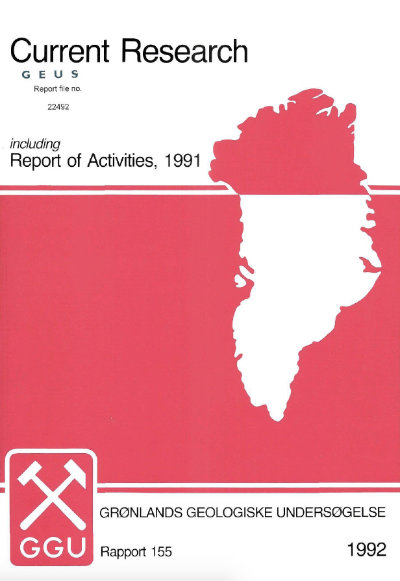A second glimpse of Early Cambrian life: new collections from Sirius Passet, North Greenland
DOI:
https://doi.org/10.34194/rapggu.v155.8180Abstract
The German mining term lagerstatten, referring to a rock of any composition containing constituents of economic interest, has been widely applied to occurrences of abundant or unusually well preserved fossils (cf. Seilacher et al., 1985). The Middle Cambrian Burgess Shale of western Canada is perhaps the most famous of all fossil-lagerstatt, with many of the approximately 140 known species preserving exquisite details of the soft anatomy of members of a community of organisms that was fossilised more than 500 million years ago (Whittington, 1985: Conway Morris, 1979, 1986; Gould, 1989). Other well known examples include the Upper Cambrian 'Orsten' of southern Sweden, the Lower Devonian Hunsruck Slate and the Jurassic Solnhofen Limestone of Germany (Stürmer et al.. 1980; Muller, 1985; Barthel et al. 1990; summary in Briggs & Crowther, 1990, pp. 266–297). The term can be applied aptly to the Sirius Passet fauna of central North Greenland, where a wealth of exceptionally preserved fossils (e.g. Fig. 1) from tile Lower Cambrian Buen Formation has been recorded from a small locality in western Peary Land, near the south-western end of the broad valley known as Sirius Passet (Fig. 2). The locality yielding the Sirius
Downloads
Published
Issue
Section
License
This article is distributed under a CC-BY 4.0 licence, permitting free redistribution and reproduction for any purpose, even commercial, provided proper citation of the original work. Author(s) retain copyright over the article contents.


